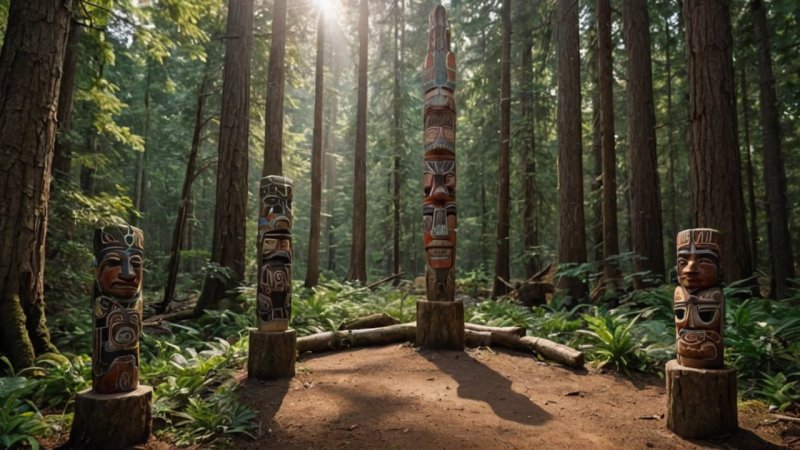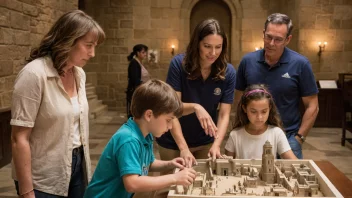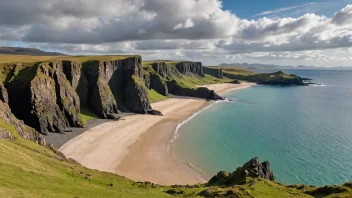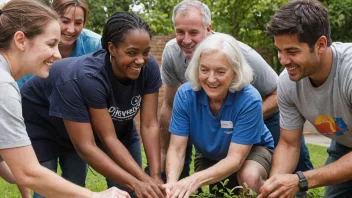Across the globe, sacred sites hold immense significance within Indigenous cultures, serving as places of worship, community gatherings, and deep spiritual connection to the land. These sites, often rich in history and tradition, are not just physical locations but are integral to the identity and heritage of Indigenous peoples. In this article, we will delve into the multifaceted importance of these sacred sites, exploring their cultural, spiritual, and ecological value, alongside the challenges they face in the modern world.
The Cultural Significance of Sacred Sites
Sacred sites serve as repositories of cultural knowledge and history, acting as living museums that preserve the stories of Indigenous peoples. These locations often embody the values, beliefs, and teachings of a community, passed down through generations. For example, in many Native American cultures, sites such as the Bear Butte in South Dakota and the sacred Black Hills are not just geographical landmarks but are considered central to their creation stories and spiritual practices.
Indigenous ceremonies and traditions conducted at these sites reinforce community bonds and provide a sense of belonging. The act of gathering at sacred sites fosters cultural continuity and resilience, as these gatherings are often used to educate younger generations about their heritage. The cultural significance of these sites extends beyond the individual to encompass the collective identity of the community, serving as a reminder of their ancestral roots.
Examples of Sacred Sites Around the World
- Uluru (Ayers Rock), Australia: A sacred site for the Anangu people, Uluru is not only a stunning natural wonder but also a place of deep spiritual significance. The Anangu people believe that their ancestors created Uluru, and it holds stories that are vital to their identity.
- Stonehenge, England: This prehistoric monument has been linked to various cultural and spiritual practices over the centuries. Although its specific meanings have evolved, it remains a site of pilgrimage for those seeking to connect with ancient traditions.
- Chichen Itza, Mexico: A UNESCO World Heritage site, Chichen Itza was a major city of the Maya civilization, and it continues to hold significance for many Maya descendants today.
The Spiritual Importance of Sacred Sites
For many Indigenous cultures, sacred sites are places where the spiritual and physical worlds intersect. These sites are often seen as gateways to the divine, where individuals can seek guidance, healing, and enlightenment. The spiritual practices associated with these sites may include rituals, prayers, and offerings, all aimed at honoring the spirits of the land and ancestors.
In addition to serving as places of worship, sacred sites often embody the belief in the interconnectedness of all living beings. Indigenous spirituality frequently emphasizes the relationship between humans, nature, and the cosmos. This connection reinforces the importance of stewardship and respect for the environment, as the health of the land is intrinsically tied to the well-being of the community.
Rituals and Ceremonies
Many Indigenous cultures have specific rituals and ceremonies associated with their sacred sites. These may include:
- Vision Quests: A rite of passage in many Native American cultures, where individuals seek spiritual insight through solitude and fasting at sacred locations.
- Seasonal Festivals: Celebrations that align with natural cycles, such as solstices or harvests, often taking place at sacred sites to honor the earth and its cycles.
- Healing Ceremonies: Rituals performed to restore balance and health, often utilizing the spiritual energy of the sacred site.
The Ecological Value of Sacred Sites
Many sacred sites are located in areas of significant ecological importance. The reverence that Indigenous cultures hold for these locations often leads to the protection of biodiversity and ecosystems. The traditional practices associated with these sites can contribute to sustainable land management and conservation efforts.
For instance, the preservation of sacred forests or mountains not only protects the cultural heritage but also supports the wildlife and plant species that thrive in these environments. Indigenous knowledge, often referred to as traditional ecological knowledge (TEK), encompasses practices that have been refined over centuries, emphasizing harmony with nature.
Examples of Ecological Stewardship
Many Indigenous communities engage in practices that promote ecological balance around their sacred sites:
- Controlled Burns: Used by some Indigenous groups to manage land and promote healthy ecosystems, reducing the risk of uncontrolled wildfires.
- Agroforestry: Integrating trees and shrubs into agricultural landscapes to enhance biodiversity and soil health.
- Water Management: Traditional methods of managing water resources that support both agriculture and the natural environment.
Challenges Facing Sacred Sites Today
Despite their importance, sacred sites face numerous challenges in the contemporary world. Industrialization, urban development, tourism, and climate change pose threats to the preservation of these culturally significant locations.
One of the most pressing issues is the encroachment of modern development, which can lead to the desecration of sacred sites. For example, the construction of roads, buildings, and other infrastructures can disrupt the spiritual and ecological integrity of these locations. Furthermore, tourism, while potentially beneficial for raising awareness and generating funds for conservation, can also lead to commercialization and exploitation, stripping away the sacredness of these sites.
Climate change further exacerbates the challenges faced by sacred sites, affecting their ecosystems and the communities that rely on them. Rising temperatures, extreme weather events, and shifting biodiversity can threaten the very existence of these sites and the cultural practices associated with them.
Advocacy and Preservation Efforts
In response to these challenges, many Indigenous communities and organizations are actively engaged in advocacy and preservation efforts. This includes:
- Legal Action: Pursuing legal avenues to protect sacred sites from development and exploitation.
- Community Education: Raising awareness about the importance of sacred sites among both Indigenous and non-Indigenous populations.
- Collaborative Conservation: Working with governmental and non-governmental organizations to develop sustainable management plans for sacred sites.
Conclusion
Sacred sites are invaluable treasures that embody the rich cultural, spiritual, and ecological heritage of Indigenous peoples around the world. By understanding their importance, we can foster greater respect and appreciation for these locations, advocating for their protection and preservation. As we navigate the complexities of the modern world, it is essential to recognize the wisdom embedded in Indigenous traditions and the lessons they offer in caring for our planet and each other. Ultimately, the safeguarding of sacred sites is not just a matter of cultural preservation but a crucial aspect of ensuring the well-being of our shared environment.






